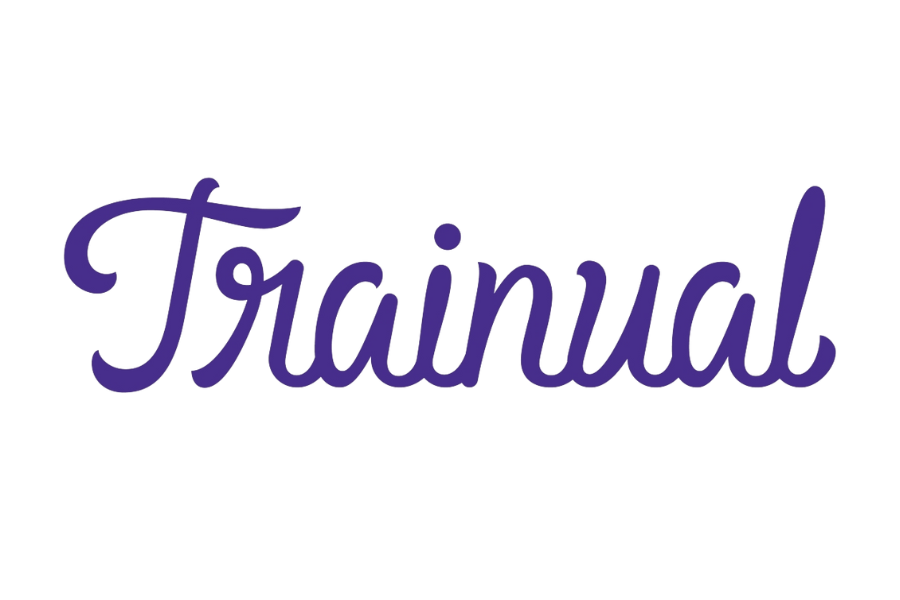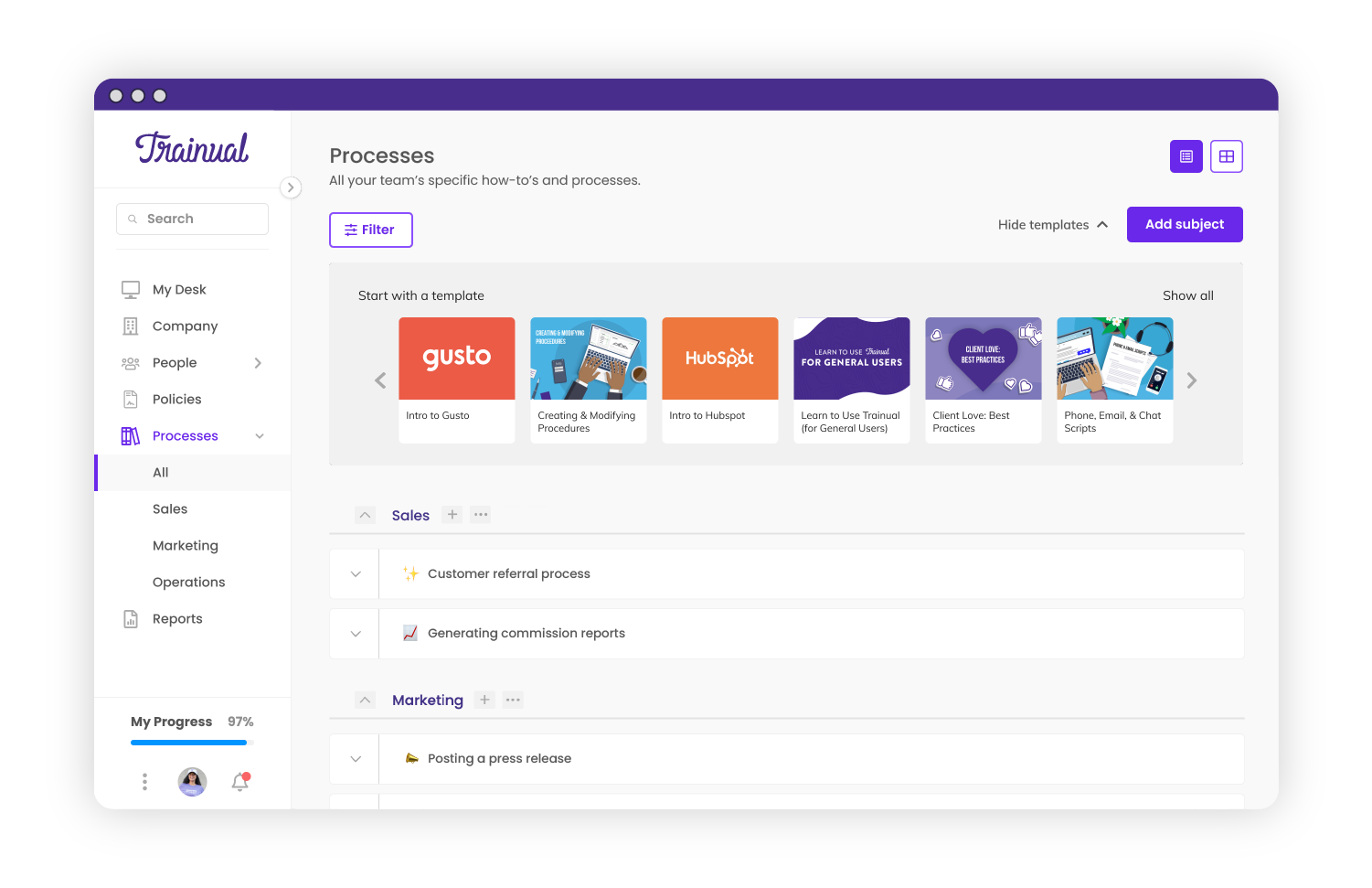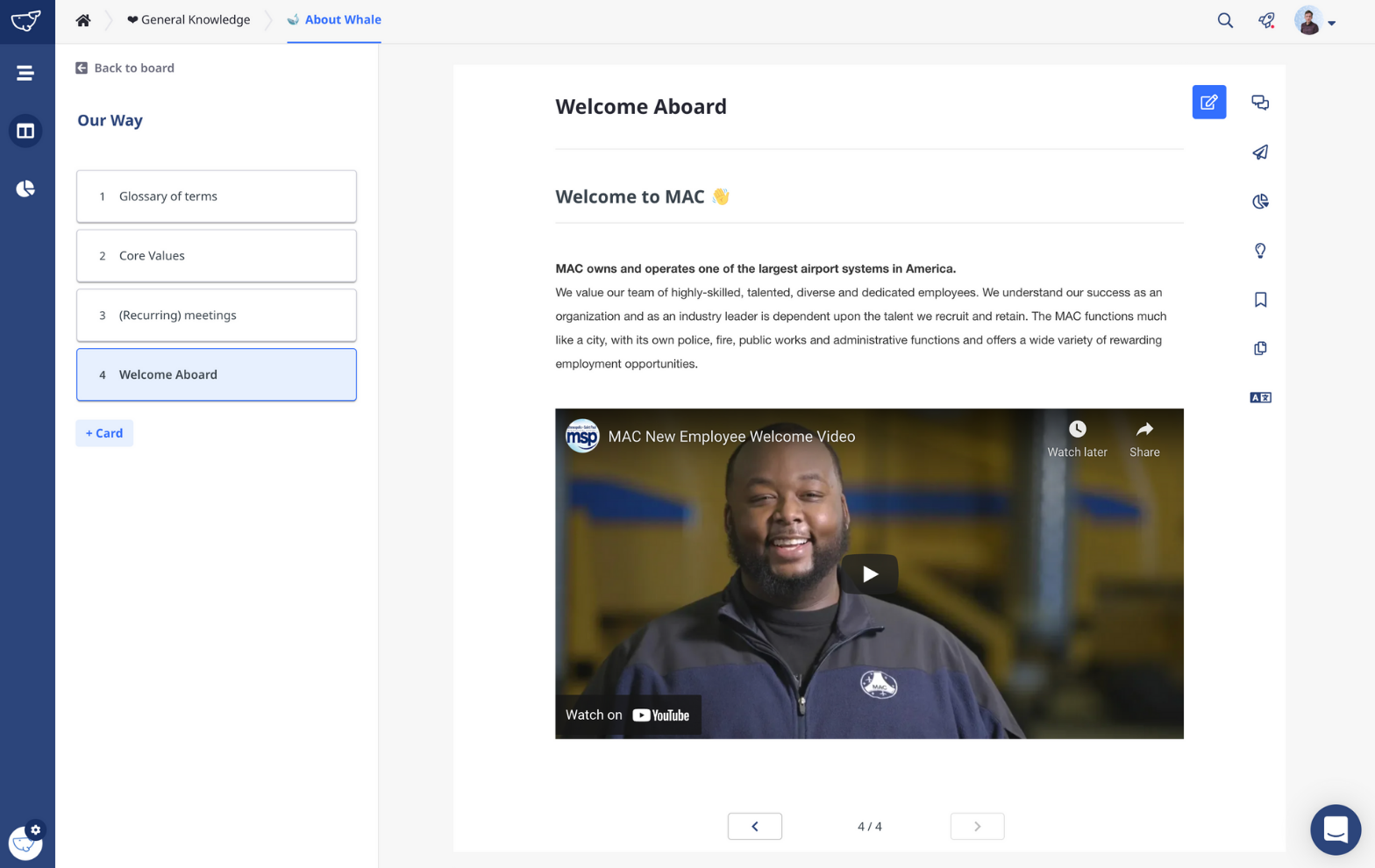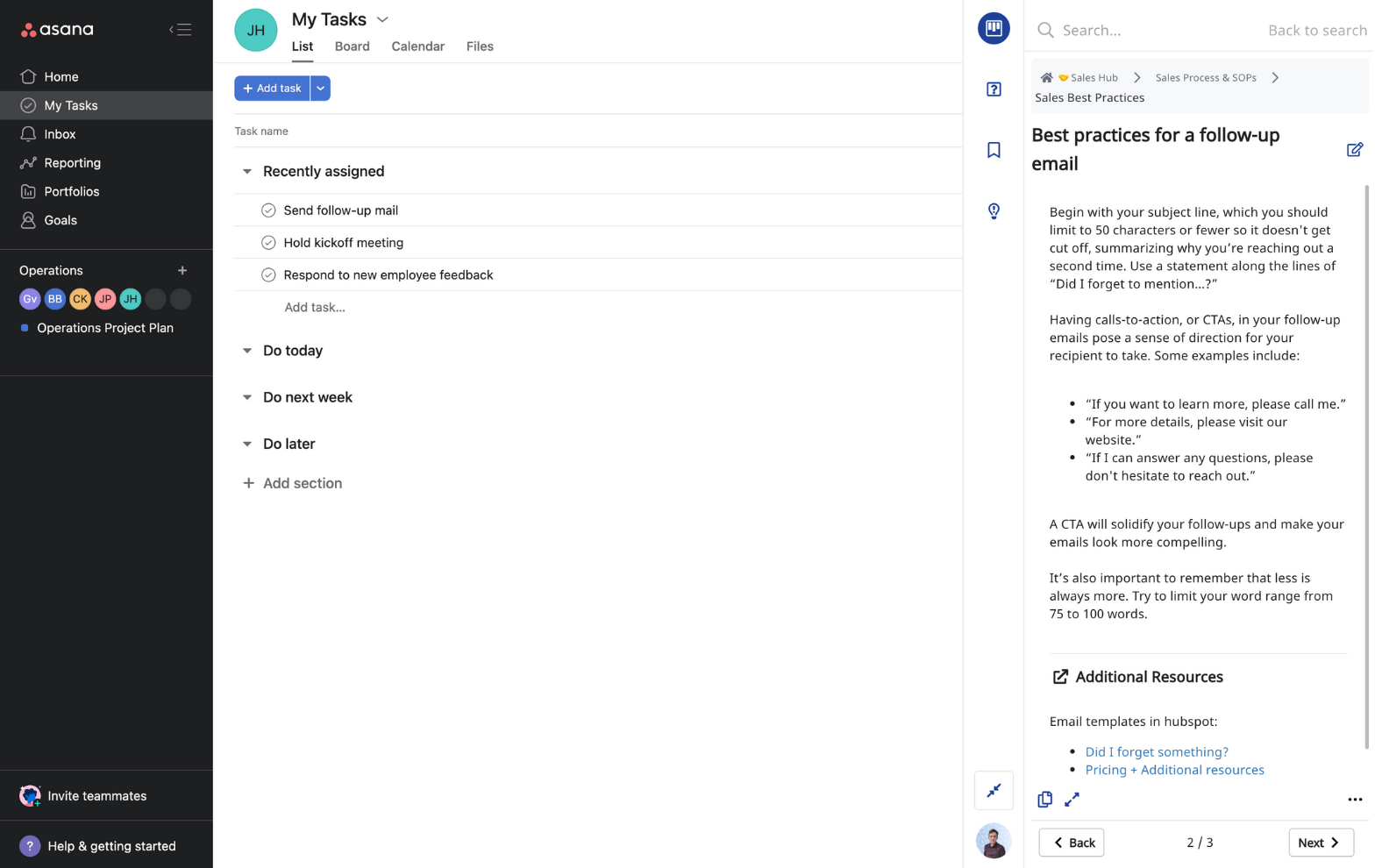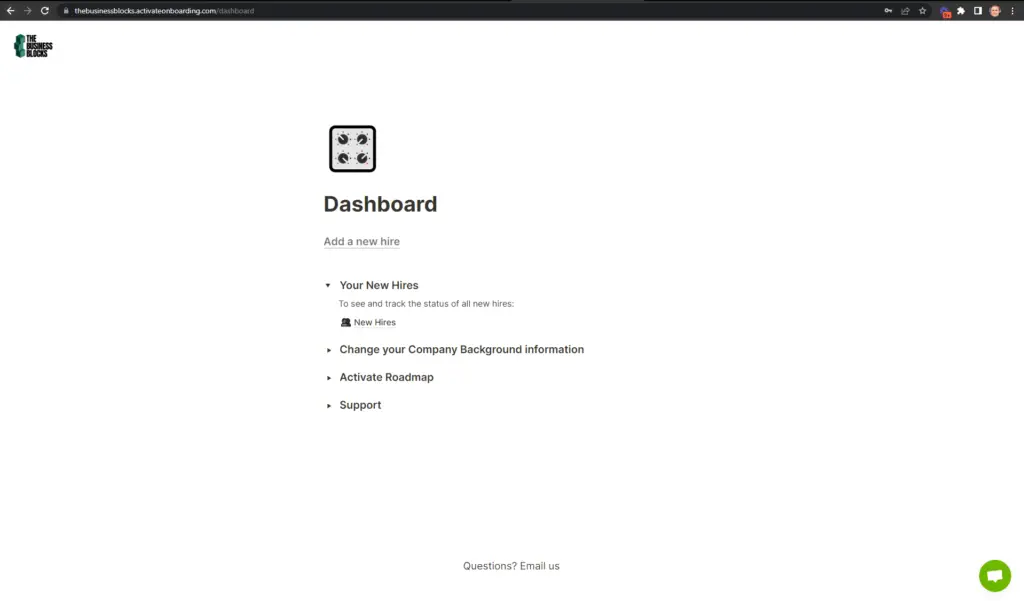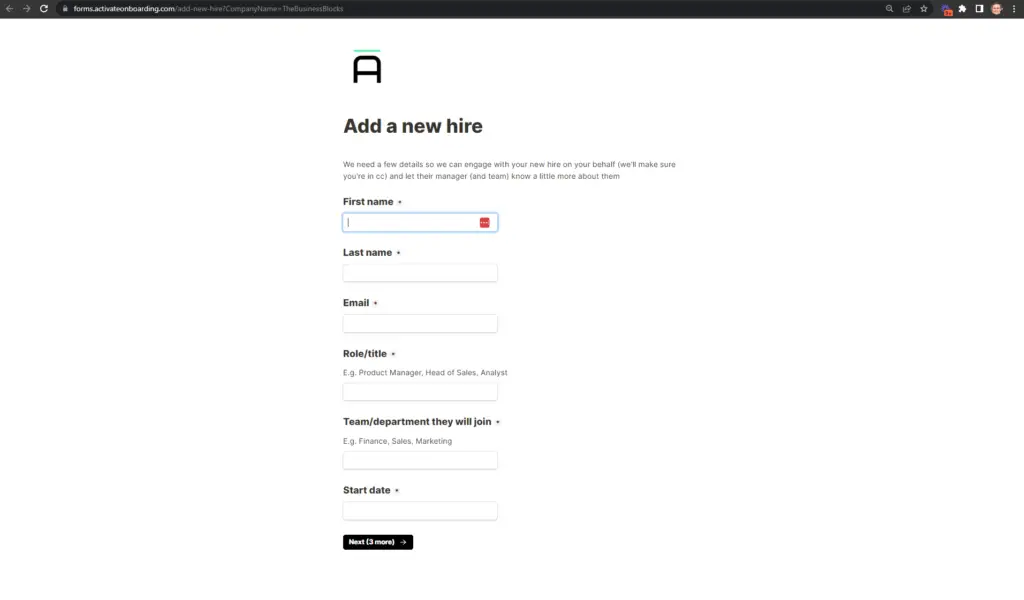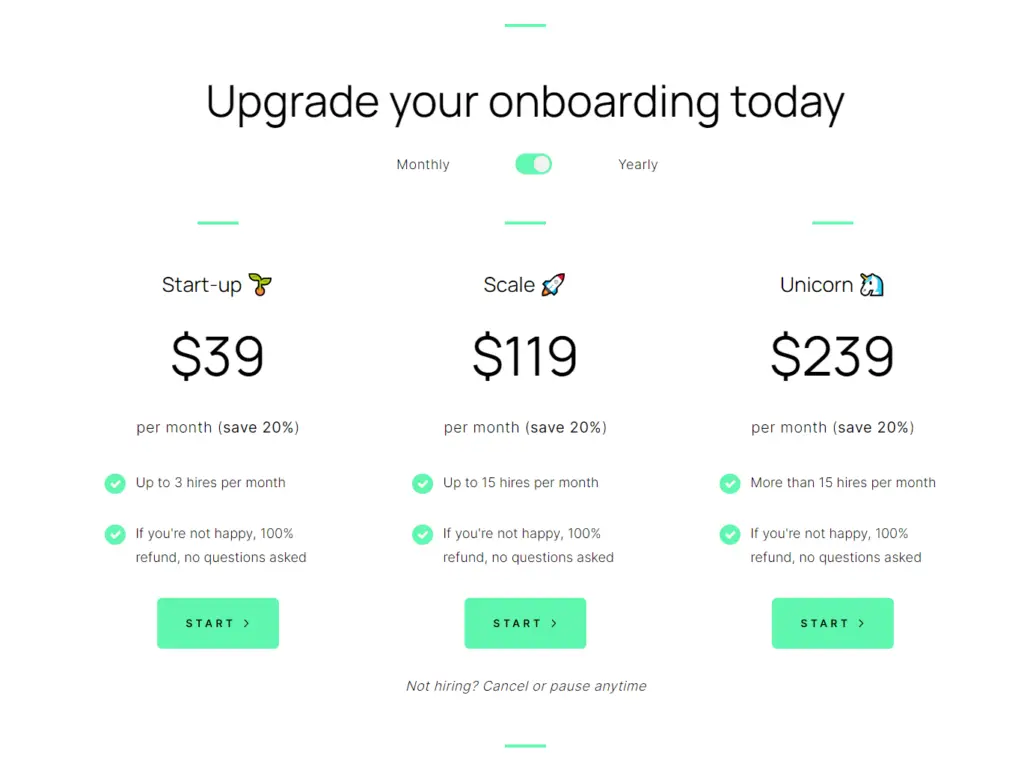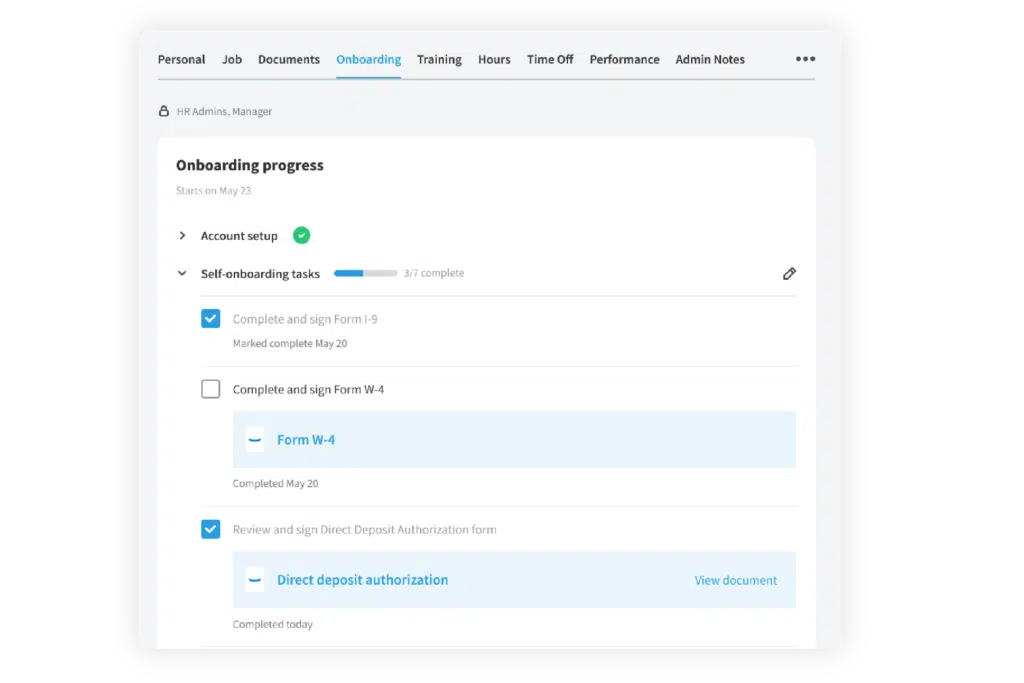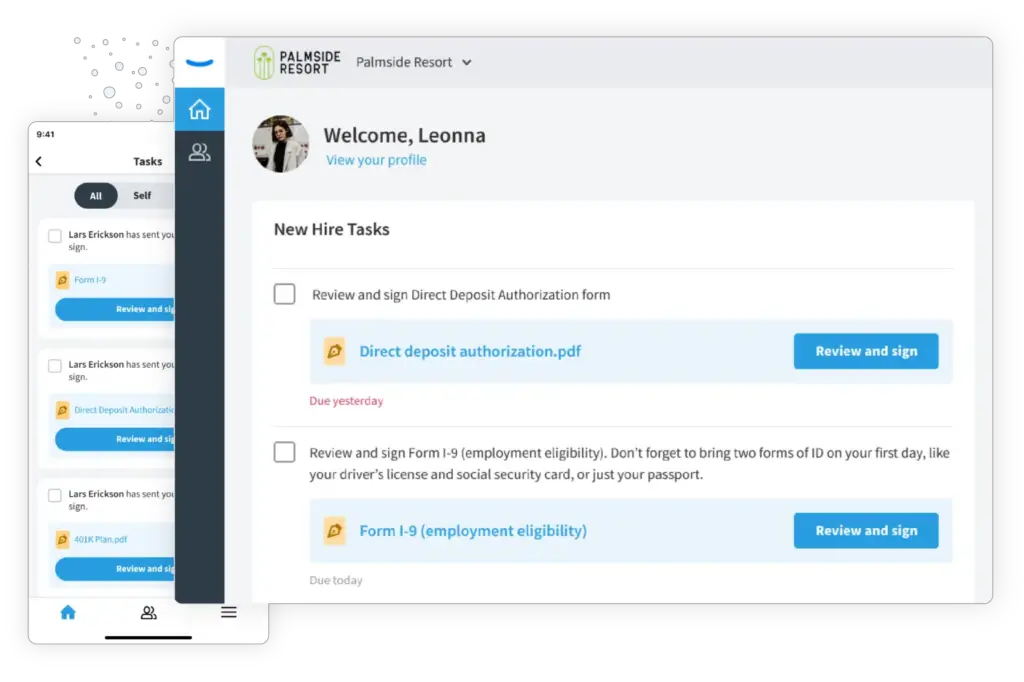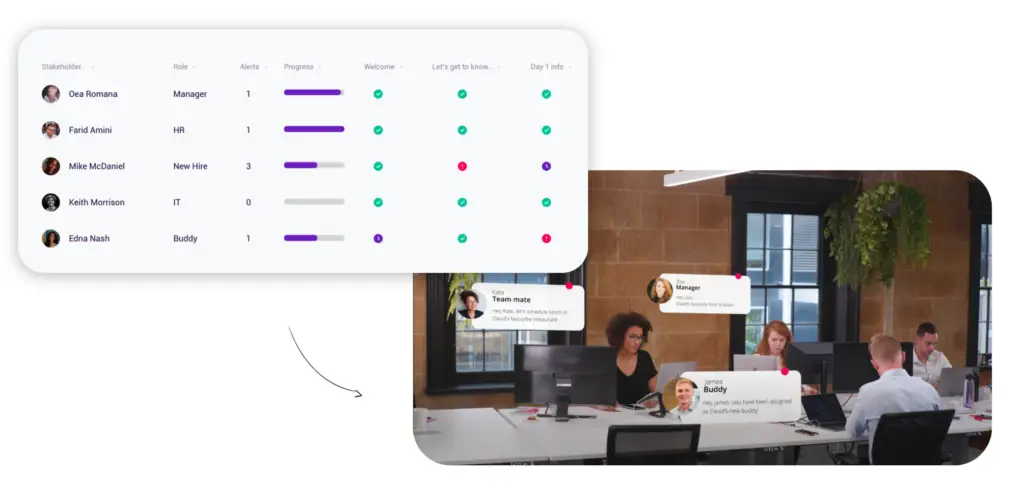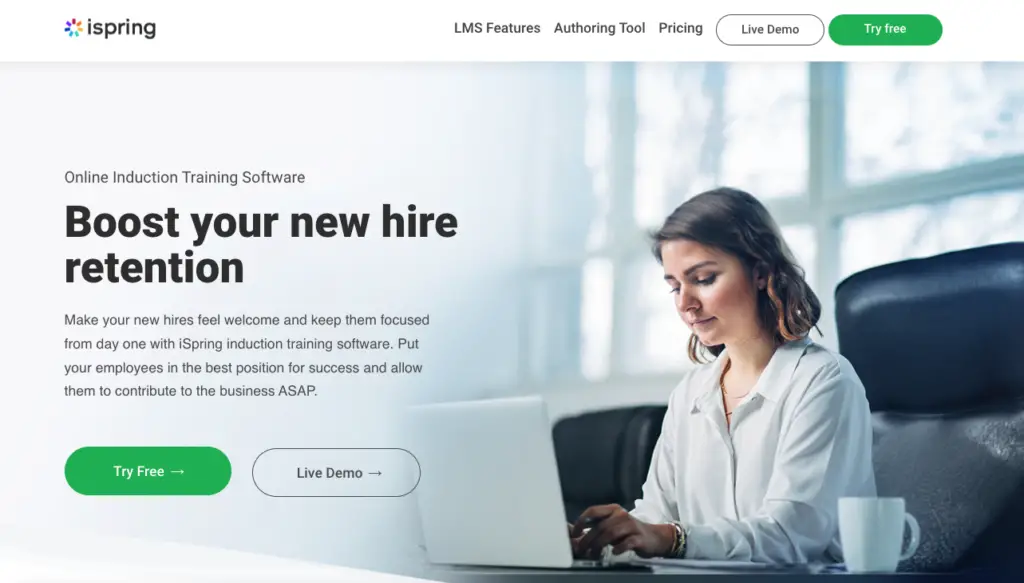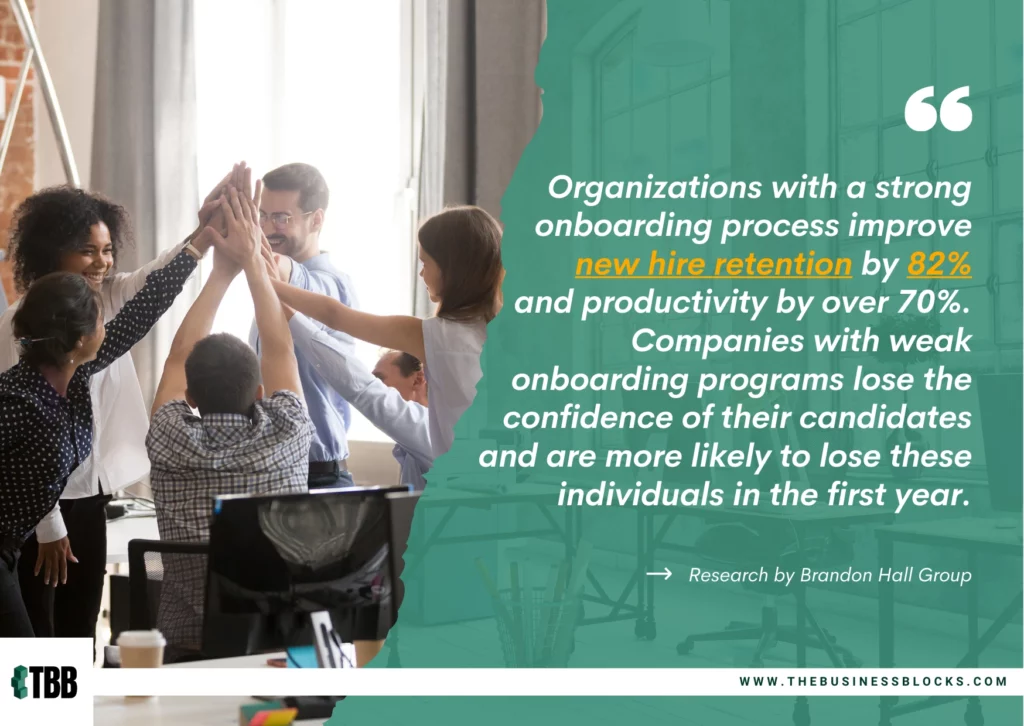Whether you are a business owner or a human resources manager, having top-notch benefits administration software has become a must in 2024. Benefits administration and management software can help you keep track of multiple important details regarding the benefits of the employee, automate benefits eligibility, manage payroll, and do a lot more!
However, finding the right benefits administration software isn’t easy. With multiple options available in the software market, it is super easy to get confused and overwhelmed. But not anymore!
Today, we will tell you about the most popular benefits administration software, its features, base price, and a lot more!
What is Benefits Administration Software?
A benefits administration and management software is a platform that enables business owners, human resources managers, and employees to track and manage workplace benefits.
From ascertaining employee eligibility for a certain benefit to automating form filling, payroll, and other admin tasks to managing compliances, benefits administration software plays a crucial role in modern-day companies. As per reports, it is estimated that the global benefits administration market will reach $887.7 million by 2028 which is terrific!
A high-quality employee benefits administration and management software offers certain benefits to both employers and employees. It reduces the manual paperwork and makes the benefits management and calculation process quick and effortless.
Here are some of the ways that employee benefits are managed through benefits software:
- Online enrollment tools that allow employees to choose their benefits and make changes as needed
- Tracking and management of employee eligibility and enrollment status
- Tools for managing premiums, claims, and other aspects of the benefits program
- Integration with other HR systems, such as payroll and time tracking, to streamline the overall benefits process
- Reporting and analytics features that provide insight into the effectiveness and cost of the benefits program.
What are the Common Employee Benefits that Companies Offer?
The top benefits that employers offer in the United States can vary depending on the size and type of company, as well as the industry it is in. Here is a list of some of the top benefits that employers offer in the United States:
- Health insurance
- Retirement savings plans
- Paid time off
- Life insurance
- Flexible work schedules
- Education and training opportunities
- Wellness programs
- Gym memberships
- Free snacks or meals
- Transportation subsidies
Employers offer employee benefits for a variety of reasons. One of the main reasons is to attract and retain top talent. A comprehensive benefits package can make a company more attractive to job seekers and can help keep current employees satisfied and engaged.
Benefits can also help to improve the overall health and well-being of employees, which can lead to increased productivity and lower healthcare costs for the company. Additionally, offering benefits can help to create a positive work culture and improve morale among employees.
How is Benefits Administration Software Useful for HR?
The major uses of employee benefits administration software for HRs include the following:
- Ensuring HIPPAA and COBRA compliances
- To manage and view profiles of several employees and the benefits availed by them
- The software also helps them review real-time reports
- To integrate other third-party software with it and manage everything in a streamlined way
- Automating several admin tasks and making the benefits management process simpler
- Consolidated self-billing and invoice generation
- Easy data collection and error reduction
Top 11 Benefits Administration Software in Details
1. Paylocity
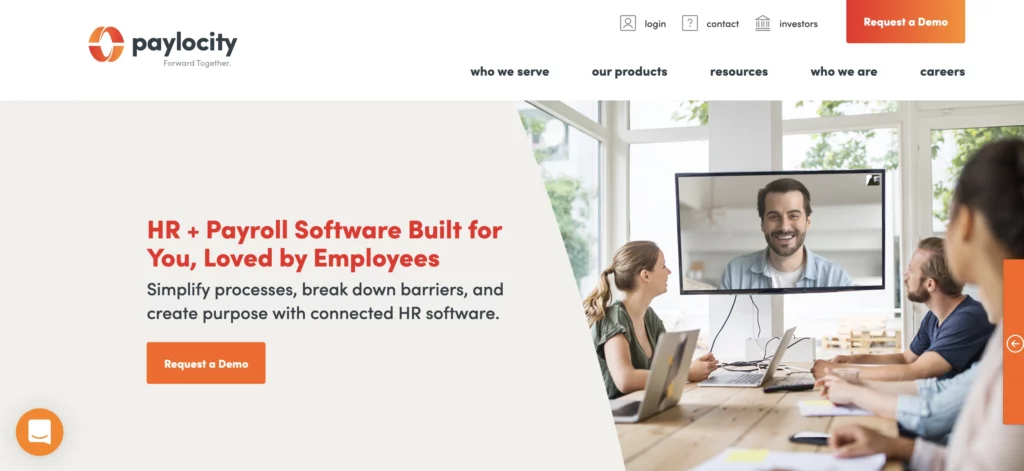
Paylocity is a popular cloud-based benefits administration software that helps human resources managers conduct everyday tasks related to payroll, talent management, complex benefit management, and more.
The most notable thing about Paylocity is that the software vendor aspires to become your partner and offer top-notch products that meet all your expectations. You will not be left with a substandard platform. Instead, you will get high-quality AI tools for report generation, ACA measurement, and so much more! It also has a well-functioning mobile app.
For pricing plan details, you will have to contact the vendor.
In case you need an alternative to Paylocity, Zen HR, GoCo, and Infor can be worth considering.
Product Details:
How much does Paylocity cost per user?
Rates are on a per employee per month (PEPM) basis, depending on company size and modules that will be availed. Subscription rates range from $18.00 to $25.00 PEPM with a one-time implementation fee.
What size of company is Paylocity best for?
Organizations with an employee range of 50 to 350 employees
What are the pros and benefits of using Paylocity software?
- All-in-one mid-market HRIS
- Capability for global record and database system
- Has open API’s and native integrations with a host of 3rd party vendors
- Paylocity’s connections and existing relationship with insurance carrier and brokerage providers
What are the cons of using Paylocity software?
- Time-tracking and attendance management are limited
- Issues with scalability and implementation of custom workflows
- Cumbersome implementation
What are the modules offered by Paylocity?
- Learning
- Payroll
- Engagement
- Benefits Administration
- Compensation
- Employee Data
- Performance
- Onboarding
- Recruiting
2. Rippling
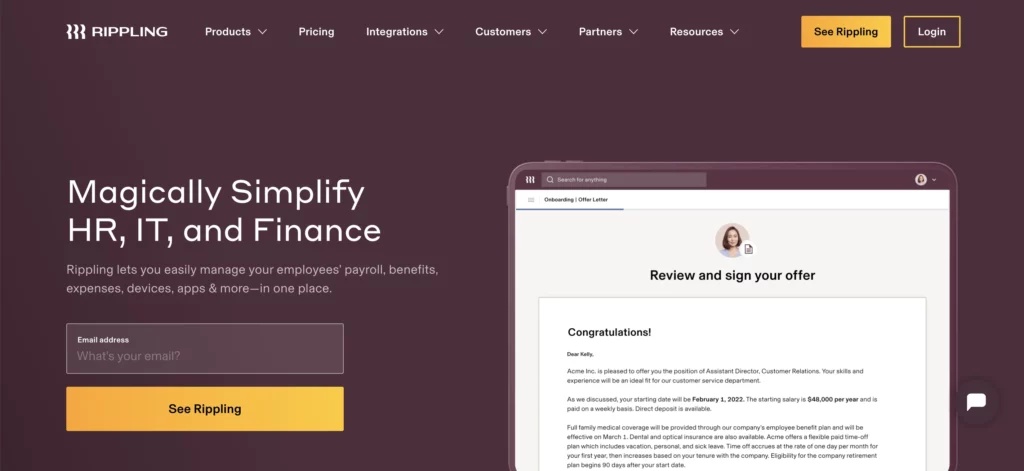
Rippling is an Editors’ Choice benefits administration software that you can find in the software market today. Rippling is basically an HR management system that offers complete benefits administration and management solutions to HRs and business owners. It is specifically designed to fulfill the needs of medium and small businesses.
The best thing about this software is its high customizability. As an admin, you can change the features and set them according to your specific needs. As an admin, you will also get a COBRA administration facility. The only downside of Rippling is that its mobile app doesn’t support the benefits administration functionalities.
Rippling’s monthly pricing plan starts from $8 per user. You can also get a customized pricing plan for your unique business needs.
GoCo, BambooHR, and Infor can be the perfect alternatives to this software.
Product Details:
How much does Rippling cost?
Subscription plans are on a monthly subscription basis, with rates ranging from $22.00 to $30.00 PEPM based on factors such as plan inclusion and modules, including a one-time implementation fee.
What size of company is Rippling best for?
Ideal for companies with 150 to 200 employees
What are the pros and benefits of using Rippling software?
- Excellent onboarding approach
- Native integration capabilities with 3rd party HR tools
- Inclusive of tax filing module
- Superior user experience
What are the cons of using Rippling software?
- Ticketing-based customer support
- Basic time tracking module
- Limited support for workflows and time tools
- Does not provide a full suite HRIS
What are the modules offered by Rippling?
- Onboarding
- Time management
- Employee data
- Benefits administration
- Payroll
3. ADP Workforce Now
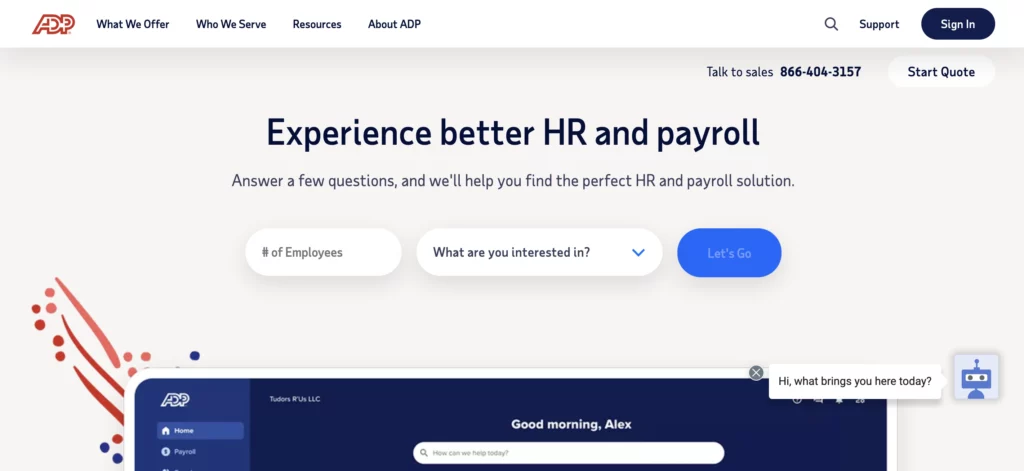
ADP is a well-known software vendor and you can turn all of their products. ADP Workforce Now is a comprehensive HCM (Human Capital Management) and HRIS (human resources information system) solution that is meant for companies with 50 or more employees.
The best thing about ADP Workforce Now is that it automates a large number of admin tasks, thereby helping you save a lot of time and effort. It allows the admin to view real-time reports, get automated alerts, view profiles of employees, and a lot more.
The software also makes making benefits enrollment easier for every employee. The software’s dashboard displays all the eligibility requirements and ACA (Affordable Care Act) compliance that you need to maintain.
You will have to contact the software vendor to get an accurate pricing plan.
Popular alternatives to this benefits administration software include Infor, BambooHR, GoCo, and Rippling.
Product Details:
How much does ADP cost?
Rates range from $19.00 to $26.00 PEPM without the Comp module, and $30.00 to $42.00 PEPM with the Comp module, including a one-time implementation fee. ADP Workforce Now offers another option for small companies.
What size of company is ADP best for?
Ideal for small to medium organizations with an employee range of 50 to 500 employees
What are the pros and benefits of using ADP software?
- Superior level of security and device management
- Excellent outsourced service called Comp Services
- Provides open API’s and a library of integration connectors
- Has strong global payroll capabilities
- Considered a market leader in tax filing and payroll processing
What are the cons of using ADP software?
- Provides an ecosystem of function that may sometimes feel disjointed
- Multiple database architecture poses challenges on data inconsistency and reporting
- Company’s focus on multiple systems such as ADP Run, ADP Workforce Now and ADP Next Generation
- Customer support requires and necessitates large-scale operations due to its large customer base
What are the modules offered by ADP?
- Learning
- Payroll
- Engagement
- Benefits Administration
- Compensation
- Employee data
- Performance
- Onboarding
- Recruiting
4. Vantage Circle
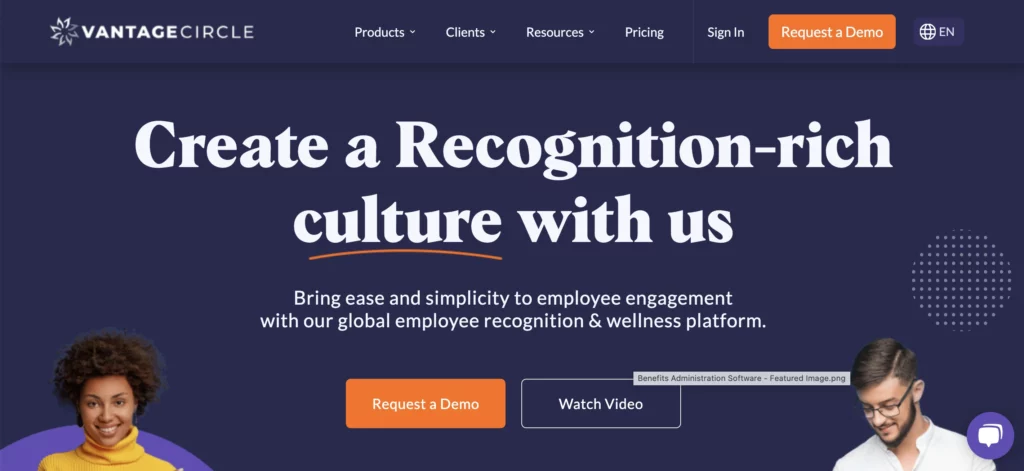
Vantage Circle is an intuitive benefits administration software that offers complete benefits administration and HRIS features including payroll management, HR analytics, and a lot more. If you are looking for high-tech benefits administration software, then Vantage Circle is it for you.
The software leverages powerful artificial intelligence and machine learning functionalities to automate common admin tasks like form filling, data collection, benefits calculation, and more. It also offers custom report generation, high-quality management tools, and an easy-to-understand interface. You can also access most of the features through its mobile app.
To get a specific pricing plan, you will have to get in touch with the software vendor.
Common alternatives to this software include Zen HR, Infor, Gusto, and PlanSource.
Product Details:
How much does Vantage Circle cost?
Has a free trial. Rates start at $4.00. The company offers other plans such as Rewards Vantage Perks, Pulse, Fit and Suite.
What size of company is Vantage Circle best for?
Targeted towards small- and medium-sized businesses and enterprises
What are the pros and benefits of using Vantage Circle software?
- Excellent features such as engagement, corporate perks and discounts, wellness and social platform
- Employs a gamified experience
- Has partnerships with high-profile brands
What are the cons of using Vantage Circle software?
- Missing support for real-time updates and notifications
- Some offers and categories are vague.
- Tracking system needs enhancement
What are the modules offered by Vantage Circle?
- Rewards
- Benefits Administration
5. Ease
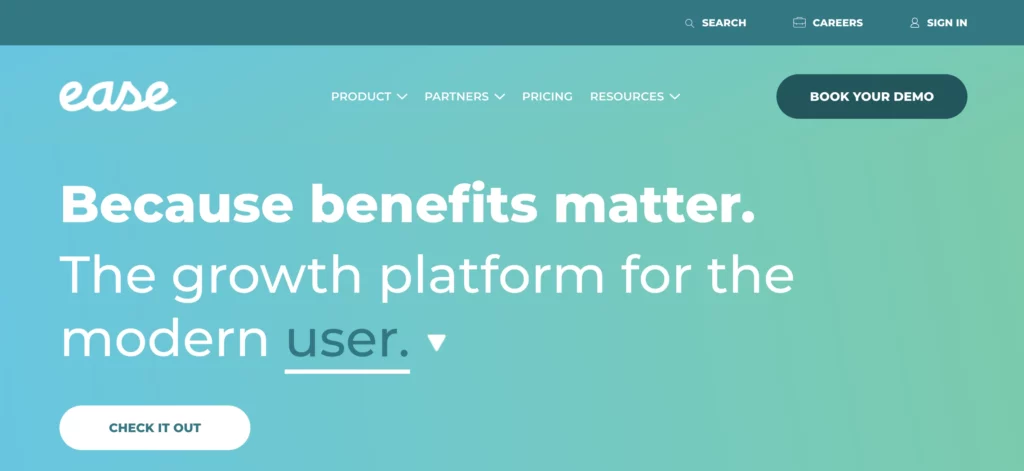
As its name suggests, Ease is one of the easiest benefits administration software in the market today. It offers benefits and complete compliance solutions and makes your work easier.
Along with this, Ease also works as a capable employee onboarding software. Further, it also enables your workforce to track an important benefits enrollment form and stay on top of all their paycheck-related details. This software is meant for organizations looking to manage benefits for a large number of employees.
The pricing plan of Ease starts from $339 per month.
Ease gives completion to PlanSource, Ripple, and Zen HR.
Product Details:
How much does Ease cost?
Has a free plan and free trial. Subscription plans are as follows:
- Pro: $379.00 per month
- Agency: $649.00 per month
- Enterprise
What size of company is Ease best for?
Ideal for SMB’s and may connect organizations with insurance brokers
What are the pros and benefits of using Ease software?
- Excellent task assignment management
- Allows benefits information tracking and management in a centralized database
- Features a self-service portal
- Ensures compliance with US federal and state regulations
What are the cons of using Ease software?
- Limitations on data capture
- Lack of customization for analytics and reports
- Cumbersome security and configuration measures
What are the modules offered by Ease?
- Rewards
- Enrollment
- Document Management
- Compliance
6. Workday HCM
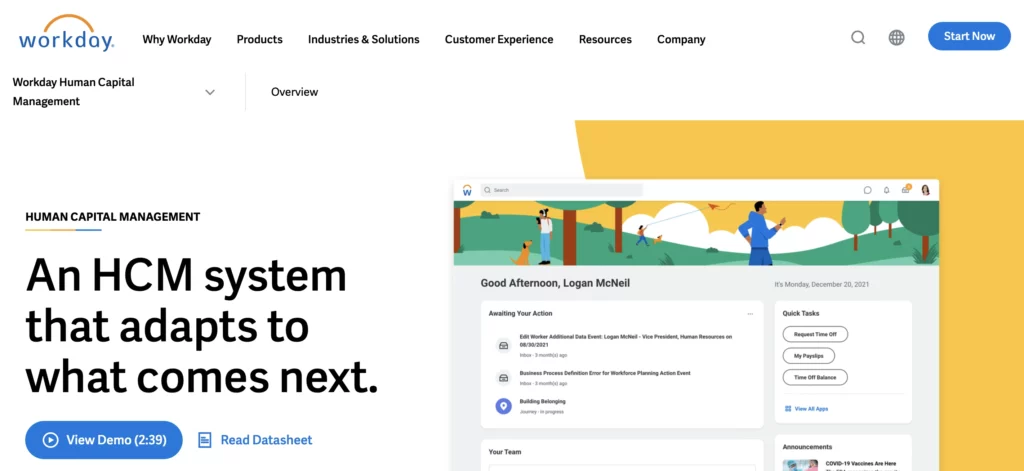
Workday is one of the most popular administration software manufacturers in the market. The Workday HCM is a complete Human Capital Management that is built on a single system with a single data source and security.
It is a cloud-based platform that automates several admin tasks like form collection, and report generation and offers payroll and employee benefits management features. Workday HCM’s payroll features are mostly meant for the U.S., France, Canada, and the UK and not for Southeast Asia or the Middle East. You can also use its app to review reports, view dashboards, and more!
Contact the vendor to get a customized pricing plan! The main alternatives to this software are Infor, PlanSource, and Zen HR.
Product Details:
How much does Workday HCM cost?
Workday implements annual subscription basis. Rates for annual subscription start at around $300K for an organization, with $40.00 to $60.00 PEPM, including a one-time implementation fee.
What size of company is Workday HCM best for?
Enterprise HRIS, ideal for large companies with more than 2000 employees
What are the pros and benefits of using Workday HCM software?
- Superior framework and architecture with support for integrations
- Fully-capable HRIS with self-service functions
- Top-notch features for talent management, performance management, employee engagement, compensation and succession
- Supports custom workflows with security permissions and rules
What are the cons of using Workday HCM software?
- Limited functions for the payroll and time management modules
- Not ideal for small- to mid-market organizations due to high costs of implementation
- Requires full-time implementation consultants and HR partners
What are the modules offered by Workday HCM?
- Learning
- Payroll
- Time and Attendance
- Engagement
- Benefits Administration
- Onboarding
- Compensation
- Employee Data
- Performance
7. Paychex Flex
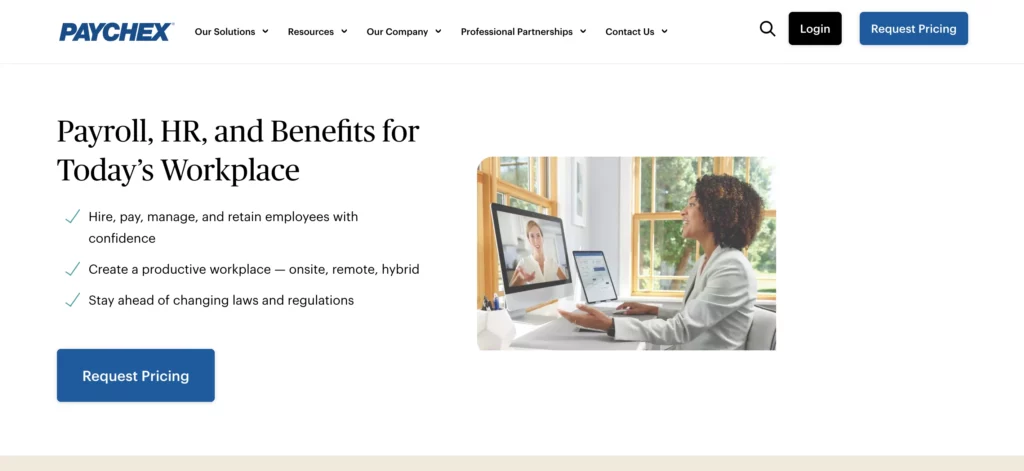
Paycheck Flex is another user-friendly benefits management platform that helps you manage the benefits, projects, and payroll of your workforce. The software stands out because of its innovative solutions that meet the needs of modern organizations perfectly.
The major features of Paychex Flex include automated form filling and collection, simplified plan administration, employee self-service portal, payroll management, and a lot more!
Contact the vendor for pricing plan created details. The main competitors of this software include Infor, GoCo, and Paycor.
Product Details:
How much does Paychex Flex cost?
Pricing information is supplied by the provider based on requests for custom quotes
What size of company is Paychex Flex best for?
Ideal for small- to medium-sized organizations
What are the pros and benefits of using Paychex Flex software?
- Excellent time and attendance tracking
- Support for client invoicing, expense management and reimbursements
- Enhances an organization’s hiring process and helps improve employee onboarding
What are the cons of using Paychex Flex software?
- Sometimes presents a clunky user experience
- Requires a steep learning curve in order to implement and make employees familiar with the platform
- Does not publish rates publicly because of its varied and customized solutions
What are the modules offered by Paychex Flex?
- Recruitment
- Onboarding
- Employee Data
- Payroll
- Time Tracking and Attendance
- HR Tools
- Benefits
- Document Management
8. Ceridian Dayforce
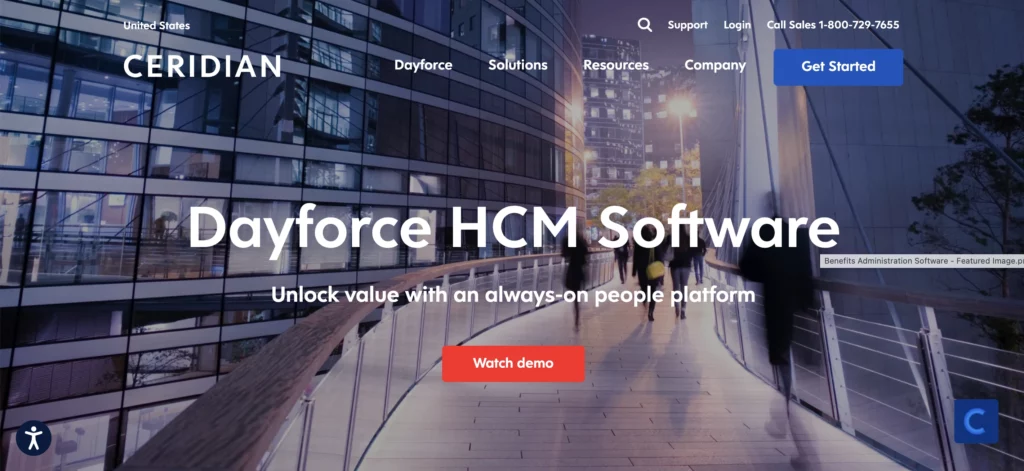
Ceridian Dayforce is one of the key players in the employee benefits administration software market. It is a comprehensive HCM solution that allows HRs to manage employee payroll, benefits, and other features quite effectively.
Other than this, the platform also offers talent management and workforce management facilities. HRs can collect, store, and manage important documents and forms, review reports, keep track of employee benefits, and do a lot more. It also has its own mobile app.
For pricing plan-related details, contact the software vendor. You can also get customized pricing plans for your business.
Looking for an alternative to this software? Check out BambooHR or Infor!
Product Details:
How much does Ceridian Dayforce cost?
Subscription plans pricing ranges from $21.00 to $29.oo PEPM, depending on the company size and modules included, including a one-time implementation fee
What size of company is Ceridian Dayforce best for?
Small- to medium-sized enterprises, ideal for companies with a headcount between 350 to 10,000 employees
What are the pros and benefits of using Ceridian Dayforce software?
- Support for region-specific payroll for North America and the United Kingdom
- Robust product architecture which allows 3rd party integrations
- Provides a superior Core HR platform with durable payroll, benefits and time management functions
- Implemented in a single database architecture
What are the cons of using Ceridian Dayforce software?
- Implementation is more time-consuming and inflexible
- Needs an update on the interface and general look and feel
- Talent management tools need further enhancement
What are the modules offered by Ceridian Dayforce?
- Payroll
- Employee Data
- Benefits Administration
- Time and Attendance
- Recruiting
- Onboarding
- Compensation
- Performance
- Learning
- Engagement
9. Paycor
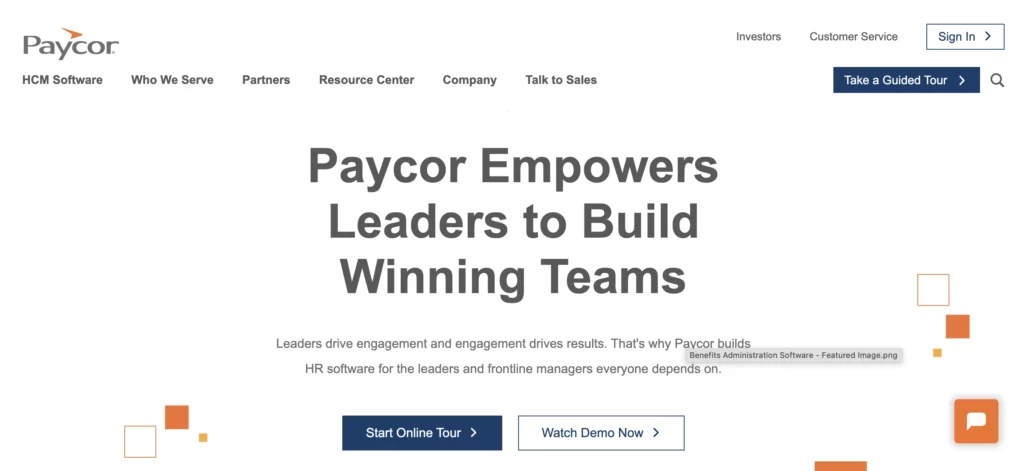
If you are in the software market looking for benefits administration software that specifically focuses on payroll, then check out Paycor! It is a super affordable HCM (Human Capital Management) that offers several useful features.
With Paycor, you will get a native mobile app to handle your employee payroll needs and view payroll reports, automated payroll management, compliance support, and a lot more! The platform is meant for small businesses with 50 or fewer employees. Make sure to check out its mobile app to review reports and stay updated about employee benefits on the go.
It has multiple pricing plans and the Basic Plan starts at just $99 per month.
The common alternatives to their software include Workforce Now, Zen HR, and BambooHR.
Product Details:
How much does Paycor cost?
Rates start at $13.00 to $19.00 PEPM based on factors such as module inclusion and implementation scope
What size of company is Paycor best for?
Works best for mid-market organizations with employee size ranging from 50 to 350 employees
What are the pros and benefits of using Paycor software?
- Focused on enhanced scheduling functions plus support and implementation resources
- low-cost solution for HRIS
- Employs a best-in-class strategy in product development
- Provides comprehensive tax support services
What are the cons of using Paycor software?
- Presents scalability concerns
- Workforce has been greatly affected by the COVID-19 pandemic.
- Uses multiple database implementation
What are the modules offered by Paycor?
- Benefits
- Time and Attendance
- Onboarding
- Learning
- Payroll
- Employee Data
- Recruiting
- Performance
- Engagement
10. Gusto
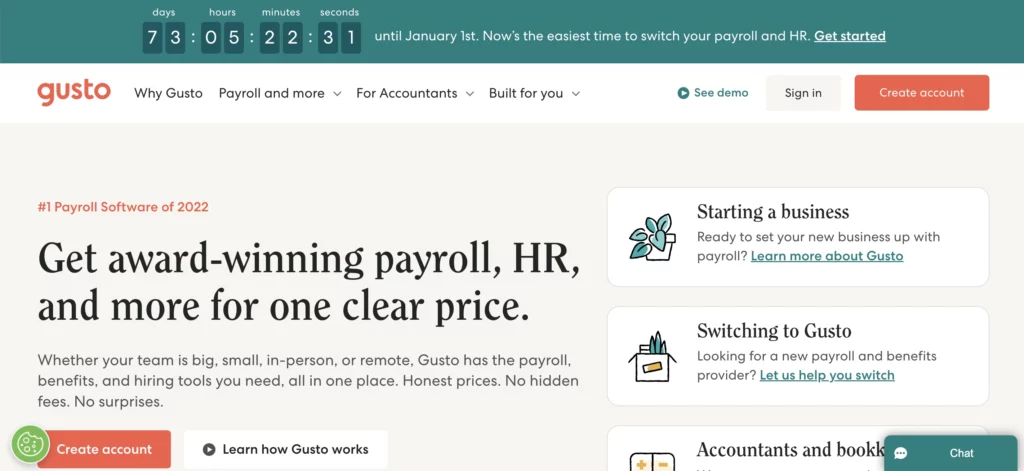
Gusto is one of the most popular human resources management platforms for small businesses in the US. The notable features of Gusto include 24/7 customer support, a complete payroll solution, a self-service portal for employees, and a lot more.
Another excellent benefit of Gusto is that it offers lifetime employee access. It also has a well-functioning mobile app that will allow you to manage and review everything on the go!
The pricing plan for Gusto starts from $40 per month for the simple plan. It also has two other plans.
In case you are looking for an alternative to Gusto, BambooHR, GoCo, and PlanSource can be great fits!
Product Details:
How much does Gusto cost?
Offers monthly or quarterly subscription plans. Rates start at $6.00 to $13.00 PEPM.
What size of company is Gusto best for?
Ideal for small- to medium-sized businesses, with less than 150 employees
What are the pros and benefits of using Gusto software?
- Continues to expand product features and recently added more time tracking, benefits administration and onboarding services an integration options
- Offers support for policy creation and compliance checks
- Can function as benefits broker
- Comes with a modern user experience and interface
What are the cons of using Gusto software?
- Limits services to small companies
- Functionalities are limited
- Employ a basic timekeeping function
What are the modules offered by Gusto?
- Onboarding
- Payroll
- Time and Attendance
- Employee Data
11. BambooHR

Finally, we have BambooHR! BambooHR is a human resources information system that helps a company’s HR partners manage employee data and conduct HR tasks by providing a large set of HR business functions such as employee onboarding and off-boarding, hiring, leave management, applicant tracking system, time tracking, benefits management, payroll processing, among others.
BambooHR’s benefits management feature is a great way to keep track of your employees’ benefits and make sure they’re getting the most out of their plans. It allows you to see all of your employees’ benefits in one place.
You can easily add or remove employees from your benefits plan. You can track employee usage of your benefits plan. You can set up alerts to remind you when an employee’s benefits are about to expire. And you can even export benefits data to share with your team or HR department.
Product Details:
How much does BambooHR cost?
- Essentials Plan starts at $5.25 Per Month
- Advantage Plan starts at $8.75 Per Month
What size of company is BambooHR best for?
BambooHR is best for small to mid-size companies.
What are the pros and benefits of using BambooHR software?
- Very easy to use
- Customizable Dashboards and Reports
- Employee Self-Service
- Open API
- Global Settings for Multi-National Businesses
What are the cons of using BambooHR software?
- Lack of pricing transparency
- Limited to cloud-based
What are the modules offered by BambooHR?
- HRIS
- Applicant tracking
- Benefits management
- Onboarding
- Offboarding
- Leave tracking
Who are the Target Users of Benefits Administration Software?
- Small business owners
- Human resources teams of various organizations
- Brokers
- Salaried employees
- Managers of different departments
- Medium and large-sized enterprises
- Business owners with remote teams
Notable Features of Benefits Administration Software
1. Easy setup: A good benefits administration software should be easy to set up and use. It shouldn’t take much time or technical knowledge just for the setup process. It should also have its native mobile app.
2. COBRA compliance: All reputed benefits administration software are COBRA and HIPPAA compliant. They make it easier for your HR department to meet all the labor law requirements and medical compliances regarding your workforce.
3. ACA measurement: This software helps HRs calculate the age-banded benefits for eligible employees as per the Affordable Care Act.
Other Software and Services Related to Benefits Administration
Employee benefits management software offers a variety of services to business owners and human resources managers. Some of the most important ones include:
- Calculation and deductions of employee benefits from their payroll
- Record and calculate benefits like healthcare coverage life insurance coverage, and more
- Automation of several admin tasks
- Report generation and review
- ACA measurement
- Adjusting insurance if an employee has opted for it
- Automating benefits eligibility
What are the Benefits of Using Benefits Administration Software for an Organization?
The major reasons and benefits of using benefits administration software for an organization are as follows:
- By automating several admin tasks, this software helps in saving a lot of your time. From form filling to managing payroll, this software can automate most of the admin tasks
- Research report focus and report review in real-time. This enables business owners and human resource managers to make informed and confident benefits decisions.
- Removal of several common employee errors that occur during reading a form for enrollment, generating reports, and so on.
- Affordable and customized pricing plan as per the unique needs of the organization
- They ensure ACA measurement and compliance according to the current market situation
- Features like an open enrollment dashboard, the latest AI tools, a quick profile view, and updated features enhance employee satisfaction.
- The software also records and manages employer-sponsored benefits effectively.
The Wrap
So there you have it! That was all about benefits administration software and how they can offer complete benefits management services. Make sure to go through this piece once again and do thorough research before investing in administration and management software.
Frequently Asked Questions about Benefits Administration Software
How can employees use benefits software?
A benefits administration software not only helps employers but employees too. Employees can simply log in to the software used by their employer through the desktop or mobile app and access all their perks and manage them accordingly. They can see the perks they can apply for, check their payroll status, and do a lot more.
What are the 4 common types of employee benefits?
The four major employee benefits include the following:
- Life insurance
- Medical insurance
- Disability insurance, and
- Retirement contributions
As a human resource manager, you can manage all of these perks and other employee benefits through top-notch and reputed employee benefits software.
What is an HRIS software?
An HRIS or HR management software is a digital solution or platform that helps HR managers to optimize and manage their day-to-day employee-related activities. It automates various manual admin operations, thereby cutting costs and saving the manager’s time.
There are several vendors that offer software for automating admin tasks and managing various employee needs. So, make sure to do proper research and current market trends before buying one.
What is the purpose of a benefits package?
The purpose of a benefits package is to provide employees with additional compensation beyond their regular salary or wages. Benefits packages typically include a range of perks and perks that are designed to improve the overall wellbeing of employees and provide them with additional financial security. The specific benefits included in a package can vary depending on the employer, but common examples include health insurance, retirement savings plans, paid time off, and life insurance. By offering a comprehensive benefits package, employers can attract and retain top talent and improve the overall health and wellbeing of their workforce.

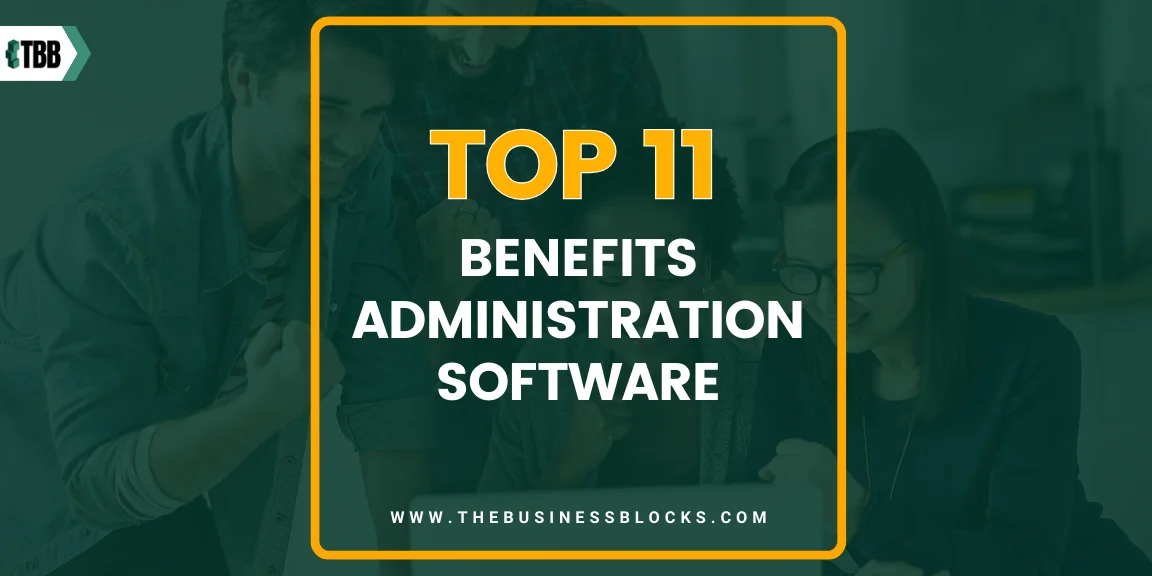
![15 Best Employee Onboarding Software [Tools for HR 2024]](https://thebusinessblocks.com/wp-content/uploads/2023/12/2023-Featured-Images-2023-12-09T172237.389.webp)
